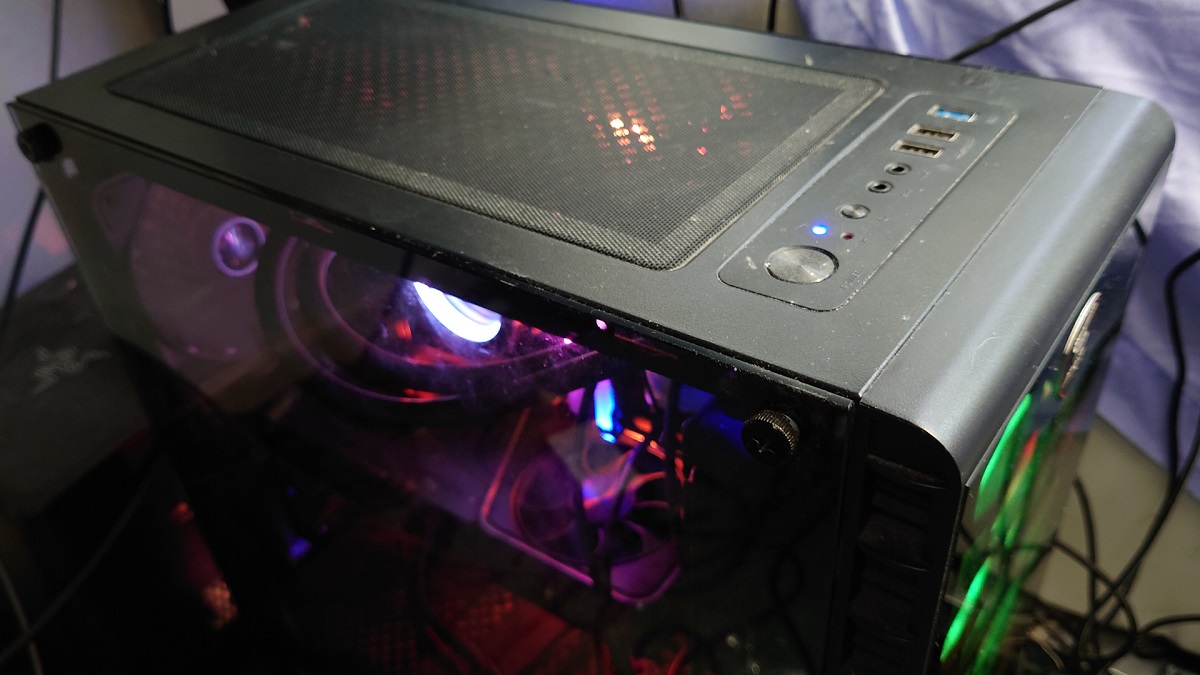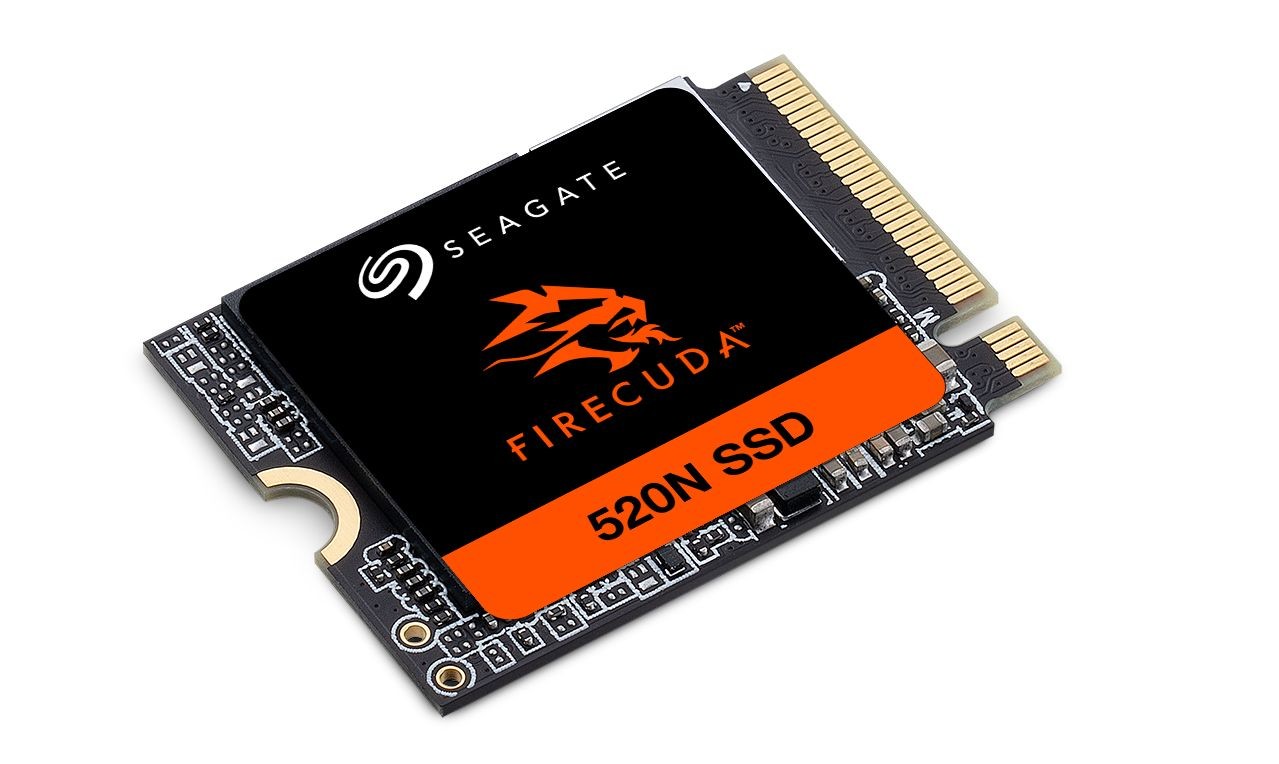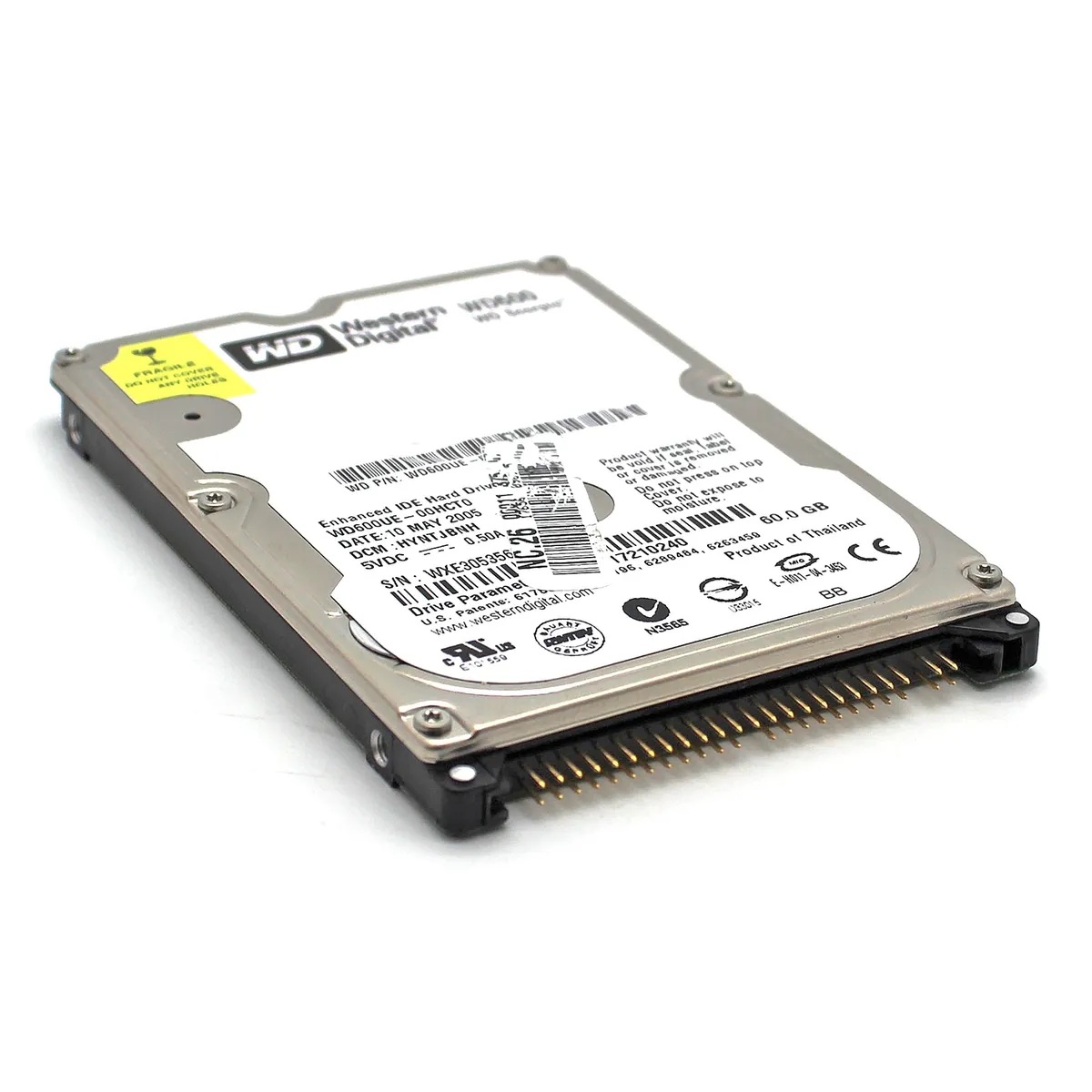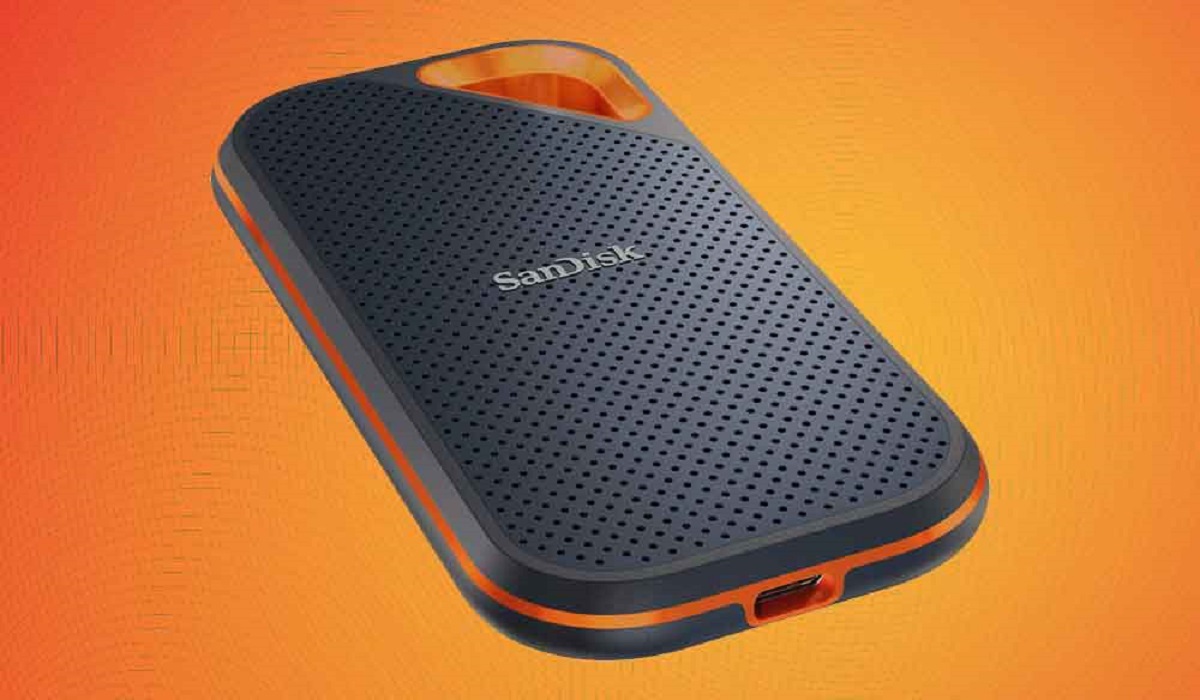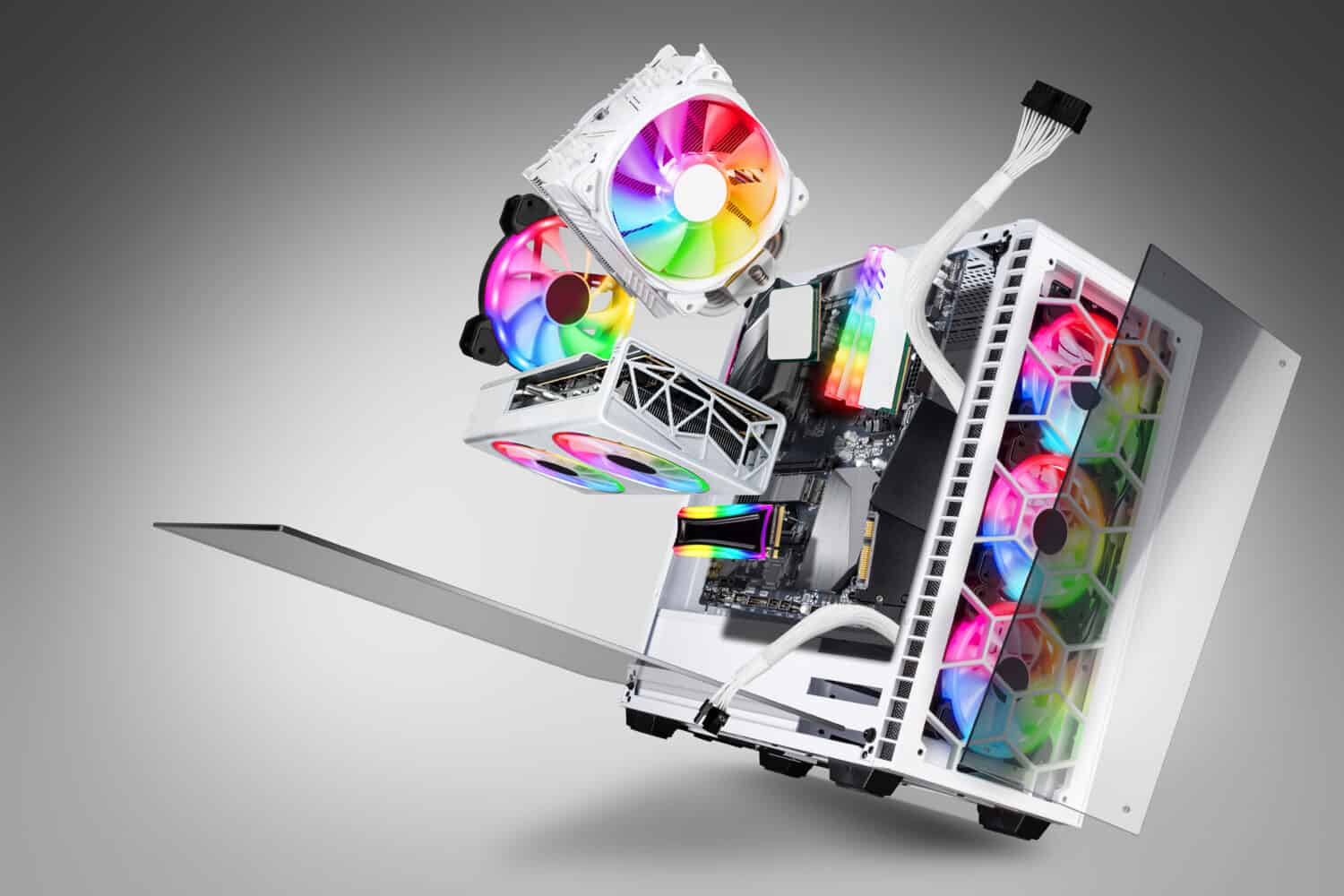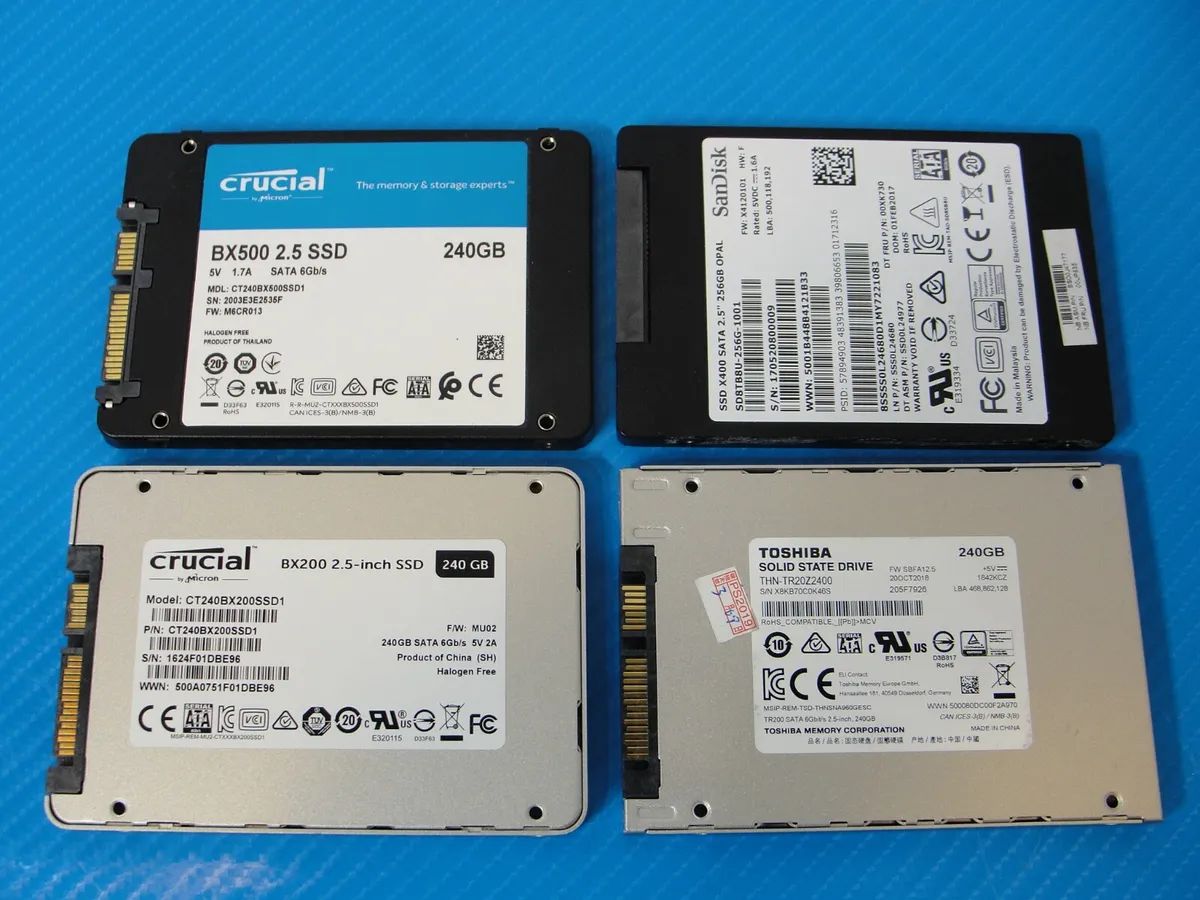Introduction
Welcome to the world of gaming, where the graphics are immersive and the virtual experience is unbelievably realistic. Whether you’re a casual gamer or a hardcore enthusiast, you know that having a high-performance gaming system is essential for an enjoyable gaming experience. One crucial component that can significantly impact your gaming performance is the storage device, and in particular, the Solid State Drive (SSD). In this article, we will explore the importance of choosing the right SSD for gaming and how it can enhance your overall gaming experience.
If you’re not familiar with what an SSD is, let’s start with a brief overview. An SSD, or Solid State Drive, is a storage device that uses flash memory to store and retrieve data. Unlike traditional hard disk drives (HDDs), which rely on spinning disks and moving read/write heads, SSDs have no moving parts, resulting in faster data access times, reduced latency, and improved durability. This makes them an ideal choice for gamers who demand fast and responsive performance.
The benefits of using an SSD for gaming are numerous. Firstly, faster load times are a major advantage. Games stored on an SSD experience significantly shorter load times compared to those stored on an HDD. This means you spend less time waiting for games to load and more time immersed in the action. Additionally, an SSD can greatly reduce in-game stuttering and lag, as it can quickly retrieve and process the necessary game data, providing a smoother and more responsive gaming experience.
Factors to consider when choosing an SSD for gaming include the size of the game installation files, the operating system and software requirements, additional storage needs, and budget considerations. By assessing these factors, you can determine the optimal size of the SSD for your gaming needs. We will delve into each of these factors in the following sections, providing you with useful information.
So, if you’re ready to take your gaming experience to the next level, join us as we explore the world of SSDs and discover how to choose the perfect SSD size for your gaming needs. Let’s dive in!
What is an SSD?
An SSD, or Solid State Drive, is a type of storage device that has gained popularity in recent years due to its numerous advantages over traditional hard disk drives (HDDs). Unlike HDDs, which use spinning disks and moving read/write heads to store and retrieve data, SSDs utilize flash memory technology to perform these tasks.
Flash memory is a non-volatile type of memory that can retain data even without power. This not only makes SSDs more reliable but also allows for faster data access and transfer speeds. An SSD can read and write data at a much faster rate compared to an HDD, resulting in reduced load times for applications and improved overall system performance.
One of the key benefits of SSDs is their lack of moving parts. Unlike HDDs, which are prone to mechanical failures and data loss if they experience physical impact or vibration, SSDs are highly durable and resilient. This makes them a perfect choice for gamers who often transport their gaming systems or gaming laptops.
Another advantage of SSDs is their silent operation. As there are no spinning disks or moving parts, SSDs produce virtually no noise while in use. This is a big plus for gamers who want a quiet gaming environment without the distracting hum of a hard drive.
Furthermore, SSDs are typically more energy-efficient than HDDs. SSDs consume less power, which can lead to extended battery life for gaming laptops or lower electricity bills for desktop gaming systems. This not only benefits the environment but also provides more convenience and cost savings for gamers.
In terms of physical appearance, SSDs come in various form factors, including the traditional 2.5-inch size, as well as smaller M.2 and PCIe NVMe designs. M.2 and PCIe NVMe SSDs offer even faster speeds and are commonly used in high-end gaming systems that demand maximum performance.
Overall, SSDs offer a significant upgrade in storage technology, delivering faster speeds, improved durability, and silent operation compared to traditional HDDs. With their numerous benefits, SSDs have become the preferred choice for gamers looking to optimize their gaming performance and enhance their overall gaming experience.
Benefits of Using an SSD for Gaming
Using a Solid State Drive (SSD) for gaming brings a plethora of benefits that can greatly enhance your gaming experience. Here are some of the key advantages of utilizing an SSD in your gaming setup:
1. Faster Load Times: One of the most significant benefits of using an SSD for gaming is the drastic reduction in load times. Games installed on an SSD launch much quicker compared to those stored on a traditional hard disk drive (HDD). You’ll spend less time waiting for games to load, and more time immersed in the captivating world of your favorite titles.
2. Improved Game Performance: SSDs offer faster data access and retrieval speeds, resulting in improved overall game performance. You’ll experience reduced in-game stuttering, faster texture loading, and seamless transitions between game areas. This makes for a smoother and more immersive gaming experience without the irritating lag that can hinder gameplay.
3. Reduced Input Lag: SSDs contribute to lower input lag, which is crucial for competitive gamers. Input lag refers to the delay between pressing a button on your gaming controller or keyboard and the corresponding action being displayed on the screen. With an SSD, data is retrieved and processed more quickly, resulting in minimal input lag and improved responsiveness in your gaming controls.
4. Faster Game Installations and Updates: Installing or updating games can be time-consuming, especially when dealing with large file sizes. With an SSD, these processes are significantly accelerated, allowing you to get into the game faster without waiting for lengthy installations or updates to complete.
5. Enhanced Multiplayer Gaming: In multiplayer gaming, loading times can be critical, especially during matchmaking or transitioning between game sessions. An SSD enables you to join multiplayer games swiftly, ensuring you don’t miss out on any action. You’ll be ready to play and compete with other gamers without delays or frustrations arising from slow loading times.
6. Quieter Operation: SSDs operate silently since they have no moving parts, unlike HDDs that have spinning disks. This means you can enjoy a quieter gaming environment, free from the noise generated by mechanical drives. The absence of any sound from the storage device allows you to fully immerse yourself in the game’s audio and experience more nuanced sound effects.
7. Consistent Performance Over Time: Unlike HDDs that can suffer from performance degradation over time, SSDs maintain consistent performance throughout their lifespan. This ensures that your games continue to benefit from fast load times and responsive gameplay, even after prolonged usage.
Overall, using an SSD for gaming provides tangible benefits that significantly enhance your gaming experience. From faster load times to improved overall performance, reduced input lag, and quieter operation, an SSD is a worthwhile investment for any gamer looking to optimize their gaming setup.
Factors to Consider When Choosing an SSD for Gaming
When selecting an SSD for gaming, it’s important to consider several factors to ensure you choose the right one that meets your specific gaming needs. Here are some key factors to consider:
1. Game Install Size: The size of modern games continues to increase, with some titles occupying tens or even hundreds of gigabytes of storage space. Determine the average size of the games you play or plan to play to ensure you select an SSD with sufficient capacity to accommodate your game library.
2. Operating System and Software: Apart from games, consider the storage requirements of your operating system and any other software you use. The operating system and certain applications require space on the SSD for optimal performance. Make sure you account for these storage requirements when selecting the SSD capacity.
3. Additional Storage Needs: Evaluate your additional storage needs beyond gaming. If you have a large media collection, work with multimedia files, or require space for creative projects, you may need a larger SSD or consider combining it with secondary storage options like HDDs or cloud storage.
4. Load Times and Performance: Consider how important fast load times and overall performance are to you. If you value quick loading screens and snappy responsiveness, investing in a higher-performance SSD with faster read and write speeds can significantly enhance your gaming experience.
5. Budget Considerations: Determine your budget for an SSD, as larger capacity drives and higher-performing models tend to be more expensive. Strike a balance between capacity, performance, and price to ensure you get the best value for your money within your budget constraints.
6. Compatibility: Check the compatibility of the SSD with your gaming system. Ensure that the interface (such as SATA or NVMe) is compatible with your motherboard or expansion slots. Additionally, consider the physical form factor (2.5-inch, M.2, U.2, etc.) and the available space inside your system for installation.
7. Brand and Warranty: Research and choose reputable brands known for producing reliable and high-quality SSDs. Check customer reviews and ratings to ensure the brand you choose has a good track record of performance and reliability. Additionally, consider the warranty provided by the manufacturer, as it offers assurance and protection for your investment.
By carefully considering these factors, you can make an informed decision when choosing an SSD for gaming that best suits your needs. Remember, each gamer’s requirements may vary, so it’s essential to prioritize the factors that are most important to you and your gaming setup.
Game Install Size
One of the primary considerations when choosing an SSD for gaming is the size of the game installations. Over the years, game sizes have significantly increased, with some AAA titles surpassing 100GB in size. Therefore, it’s crucial to assess the average size of the games you play or plan to play when determining the SSD capacity you require.
Start by examining your game library or researching the install sizes of the games you’re interested in. Understand that modern games often come with updates, expansions, and downloadable content (DLC), which can further increase their storage requirements. Take these additional files into account to ensure you have enough space available.
When considering the game install size, keep in mind that not all games need to be stored on your SSD at all times. While it’s ideal to have your favorite and most frequently played games on your SSD for faster load times, you can save less frequently played games or those with large file sizes on secondary storage, such as a traditional hard disk drive (HDD).
The SSD capacity you choose could depend on your gaming habits and preferences. If you find yourself frequently jumping between various games and want them all readily available on your SSD, you may require a larger capacity drive. On the other hand, if you tend to focus on playing a few games at a time, a smaller SSD capacity may suffice.
It’s worth noting that SSDs with larger capacities are generally more expensive. So, finding the right balance between your gaming needs and your budget is crucial. Consider the current and future demands of your game library to determine the appropriate SSD capacity, and take into account the potential need for additional storage solutions, like external drives or cloud storage, if necessary.
Remember, game install sizes will continue to grow as developers release more content and improve graphics and gameplay. Therefore, it’s wise to future-proof your SSD capacity to some extent. Opting for a slightly larger SSD capacity than your current needs may prove beneficial in the long run, allowing you to accommodate larger games and updates without worrying about running out of space.
In summary, evaluating the game install size is an important factor when selecting an SSD for gaming. Take stock of your current game library, consider the potential storage demands of future releases, and weigh your budget and storage preferences to determine the ideal SSD capacity for your gaming needs.
Operating System and Software
When choosing an SSD for gaming, it’s essential to consider the storage requirements of your operating system and other software applications. While the focus is often on game installations, neglecting the needs of the operating system and software can lead to suboptimal performance.
Your operating system requires a certain amount of storage space to function properly. This includes the core files, system files, temporary files, and other essential components. The specific storage requirements vary depending on the operating system you use, with Windows, macOS, and Linux each having different space requirements.
Consider the recommended and minimum storage requirements provided by the operating system manufacturer to give you an idea of the necessary space. However, keep in mind that these values may not account for future updates or added software applications. It’s generally a good practice to allocate more space than the minimum requirements to ensure smooth operation and accommodate future updates.
In addition to the operating system, think about the software applications you regularly use. This can include productivity tools, media editing software, antivirus programs, and more. These applications also require their own storage space to operate efficiently and store temporary files.
Take into account the storage demands of the software applications you use. Some applications, particularly multimedia editing software or virtual machines, can require a significant amount of storage space to operate effectively. Research the storage requirements of the specific applications you rely on to ensure you have enough space on your SSD.
It’s worth noting that SSDs are not solely limited to gaming. By selecting an SSD with sufficient storage capacity to accommodate both the operating system and software applications, you can enjoy the benefits of faster load times and improved performance across all aspects of your computer usage.
Consider the overall storage needs of your operating system and software applications when choosing an SSD for gaming. Allocate adequate space for the operating system, future updates, and the software applications you rely on. Additionally, it’s recommended to leave some free space on the SSD to maintain optimal performance and ensure there’s room for any temporary files generated by the operating system or applications.
By choosing an SSD size that accounts for both your gaming needs and the storage requirements of the operating system and software applications, you can create a well-rounded and high-performing system for all your computing needs.
Additional Storage Needs
While the primary focus when choosing an SSD for gaming is often the game installations and the operating system, it’s crucial to consider your additional storage needs. Assessing these needs allows you to determine whether the SSD capacity you choose will suffice or if you require supplementary storage options.
Consider the types of files and data you frequently access or work with beyond gaming. This may include a large media collection, such as movies, music, or high-resolution images. Multimedia files can occupy a significant amount of storage space, so it’s important to factor them into your decision-making process.
If you engage in content creation, such as video editing, graphic design, or 3D modeling, these tasks often generate large project files. Evaluate the size of these files and their storage requirements. You may need to allocate additional space on your SSD or explore secondary storage options, such as external hard drives or network-attached storage (NAS) devices, to accommodate your creative projects.
Consider your personal or work-related storage needs beyond gaming. If the SSD you choose solely accommodates your gaming installations and the operating system, you may find yourself running out of space for other files. Assess whether you need a larger SSD capacity to meet these additional storage needs or if a combination of an SSD for gaming and secondary storage solutions is more suitable.
Cloud storage is another option to consider for additional storage needs. Services like Google Drive, Dropbox, and Microsoft OneDrive offer storage space in the cloud, allowing you to store and access files online. This can be a convenient option, particularly for files that you don’t need immediate access to or that you want to keep securely backed up.
It’s important to strike a balance between your primary gaming storage needs and your additional storage requirements. Evaluate the amount of space you regularly use for non-gaming files and consider the feasibility of allocating a portion of your SSD for these files or investing in alternative storage options.
By assessing your additional storage needs beyond gaming, you can ensure that your chosen SSD capacity aligns with your overall storage requirements. Whether it’s a larger SSD, external storage solutions, or cloud storage, finding the right combination of primary and secondary storage options will allow you to manage and access all your files efficiently.
Load Times and Performance
Load times and overall performance are key factors in determining the quality of your gaming experience. The choice of SSD can significantly impact these aspects, making it crucial to consider how load times and performance align with your gaming needs.
One of the primary benefits of using an SSD for gaming is the dramatic reduction in load times. Games stored on an SSD can load much faster compared to traditional hard disk drives (HDDs). This means you spend less time waiting for games to load and more time enjoying the immersive gameplay.
Shorter load times have a ripple effect on your gaming experience. In addition to quickly launching the game itself, SSDs also reduce the time it takes for levels, maps, or new game areas to load. This results in a more seamless and immersive experience, as you can seamlessly transition between game areas without frustrating pauses or delays.
Moreover, an SSD’s performance extends beyond load times. When playing games, an SSD can greatly reduce in-game stuttering, as it efficiently retrieves the necessary data for rendering graphics, textures, and other game assets. This ensures a smoother and more responsive gaming experience without interruptions or noticeable lag.
SSDs are known for their faster data access and transfer speeds, which contribute to improved overall game performance. They can quickly read and write data, allowing the game to load assets and process information rapidly. This results in more responsive controls, reduced input lag, and enhanced gameplay, especially in fast-paced and competitive gaming environments.
Keep in mind that not all SSDs offer the same level of performance. SSDs with higher read and write speeds, as well as lower latency, tend to offer better overall performance. Consider the specifications of the SSD, such as the read and write speeds mentioned in the product details, to ensure you choose a model that aligns with your performance expectations.
Another factor to consider is the type of interface the SSD uses. NVMe (Non-Volatile Memory Express) SSDs, for example, offer even faster speeds compared to SATA-based SSDs, resulting in improved gaming performance. However, it’s important to note that your gaming system must support the NVMe interface for you to take full advantage of its capabilities.
By selecting an SSD that offers fast load times and optimal overall performance, you can enhance your gaming experience by reducing wait times, minimizing in-game stuttering, and enjoying smoother gameplay. Consider the specifications and performance capabilities of the SSDs you are considering to ensure they can meet your gaming performance requirements.
Budget Considerations
When choosing an SSD for gaming, it’s important to consider your budget. With a wide range of SSD options available, budget considerations play a significant role in determining the capacity and performance level of the SSD you can invest in.
One of the primary factors that affects the cost of an SSD is its capacity. Generally, larger capacity SSDs are more expensive compared to smaller ones. Therefore, it’s essential to strike a balance between your storage needs and your budget constraints.
Assess your gaming requirements and consider the average size of the games you play or plan to play. This will help you determine the minimum SSD capacity you need. Keep in mind that allocating additional space for the operating system and software applications is also essential to ensure optimal performance.
Additionally, consider the pricing difference between SATA-based SSDs and NVMe SSDs. NVMe SSDs usually offer faster speeds, but they are typically more expensive. If budget is a significant concern, SATA-based SSDs can still provide significant performance improvements compared to traditional hard disk drives (HDDs) while being more cost-effective.
Brand reputation and customer reviews can also play a role in budget considerations. Well-known brands may command a higher price due to their reputation for reliability and performance. However, it’s important to balance the brand reputation with your budget limitations and assess the value you are getting for the price paid.
It’s important to remember that an SSD is an investment in your gaming experience. While a larger capacity or higher-performing SSD may offer more benefits, it may also come with a higher price tag. Consider your gaming needs and prioritize the aspects that are most important to you, such as load times, performance, or overall storage capacity.
Ultimately, finding the right SSD within your budget requires research and comparison. Look for SSDs that offer a good balance between capacity, performance, and price. Compare different brands and models, and read customer reviews to get an understanding of the overall value and reliability of the SSD you are considering.
By considering your budget and prioritizing the features that are most important to you, you can find an SSD that offers a good balance of performance and affordability, allowing you to enhance your gaming experience without breaking the bank.
Recommendations for SSD Size Based on Gaming Needs
Choosing the right size of SSD for your gaming needs is crucial to ensure sufficient storage capacity without overspending. While the appropriate size may vary depending on individual gaming habits, here are some recommendations to help you make an informed decision:
1. Casual Gamers: If you are a casual gamer who plays a limited number of games or focuses on smaller titles, a 500GB SSD should suffice. This capacity allows you to install a few games along with your operating system and essential software without breaking the bank.
2. Enthusiast Gamers: Enthusiast gamers who frequently indulge in a variety of games, including large AAA titles, may benefit from a higher capacity SSD. We recommend opting for 1TB or 2TB SSDs, as this provides ample space to store a diverse collection of games without worrying about running out of storage.
3. Streamers and Content Creators: If you are a streamer, content creator, or engage in video editing or other media-intensive tasks, consider investing in larger SSD capacities, such as 2TB or even 4TB. These capacities allow you to store not only your games but also your media files, ensuring quick access and smooth workflow during content creation.
4. Budget-Conscious Gamers: For gamers on a tight budget, a 250GB or 500GB SSD can suffice. While these capacities may limit the number of games you can install simultaneously, you can prioritize your most-played titles and rotate them as needed. Consider supplementing your storage with external HDDs or cloud storage for additional space, if required.
5. Competitive Gamers: Competitive gamers who require quick load times and minimal latency may prioritize performance over capacity. In this case, a smaller-sized SSD, such as 256GB or 512GB, might be sufficient. Use these SSDs specifically for your favorite and frequently played games, ensuring optimal performance during competitive matches.
Remember, these recommendations are general guidelines. Your gaming habits, preferences, and available budget ultimately dictate the ideal SSD size for your needs. Consider factors like the average size of the games you play, the storage requirements of your operating system and software, and any additional storage needs beyond gaming.
It’s also important to note that SSDs with larger capacities provide more flexibility for future game releases and updates, preventing the need to constantly manage your storage space. If feasible within your budget, selecting a slightly larger SSD capacity can offer long-term benefits and save you from potential storage constraints down the line.
Evaluating your specific requirements and striking the right balance between capacity and budget will help you make an educated decision when choosing the size of your SSD, ensuring optimal gaming performance and storage capacity for your needs.
Conclusion
Choosing the right Solid State Drive (SSD) for gaming is a crucial decision that can greatly enhance your gaming experience. By considering various factors such as game install size, operating system and software requirements, additional storage needs, load times and performance, and budget, you can make an informed choice that aligns with your gaming habits and budget constraints.
An SSD offers faster load times and improved overall performance compared to traditional hard disk drives (HDDs). It reduces in-game stuttering, provides quicker access to game data, and enhances responsiveness, resulting in a smoother and more immersive gaming experience. Additionally, an SSD operates silently, offers durability, and requires less power, making it an ideal choice for gamers.
When determining the suitable SSD size for your gaming needs, consider the average game install size and the storage requirements of your operating system and software applications. Evaluate your additional storage needs, such as media collections or creative projects, and account for future growth in game sizes. Budget considerations also play a vital role, balancing capacity, performance, and price.
Based on your gaming preferences, we provided recommendations for SSD sizes. Casual gamers can opt for 500GB SSDs, while enthusiast gamers may benefit from 1TB or 2TB SSDs. Streamers and content creators may require larger capacities like 2TB or 4TB. Budget-conscious gamers can consider 250GB or 500GB SSDs, supplemented with external storage if needed. Competitive gamers, prioritizing performance, may find smaller sizes like 256GB or 512GB sufficient.
Ultimately, the choice of SSD size depends on your individual gaming needs and budget. By carefully considering these factors and finding the right balance, you can select an SSD that enhances your gaming experience, reduces load times, improves overall performance, and accommodates your storage requirements.
Upgrade your gaming system with an SSD, and get ready to experience faster load times, smoother gameplay, and enhanced responsiveness. Embrace the benefits of SSD technology and enjoy a seamless and immersive journey into the world of gaming.







